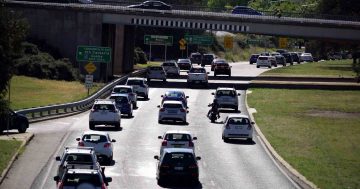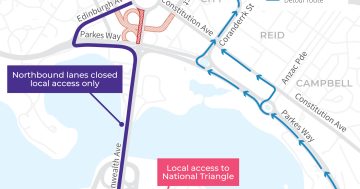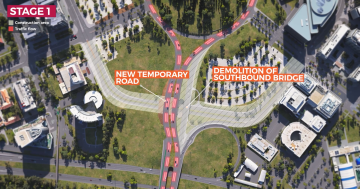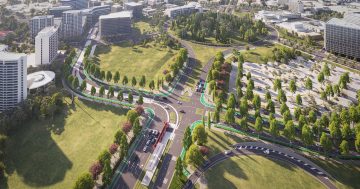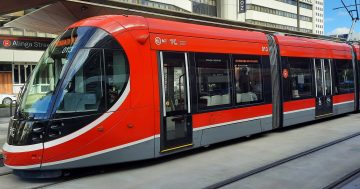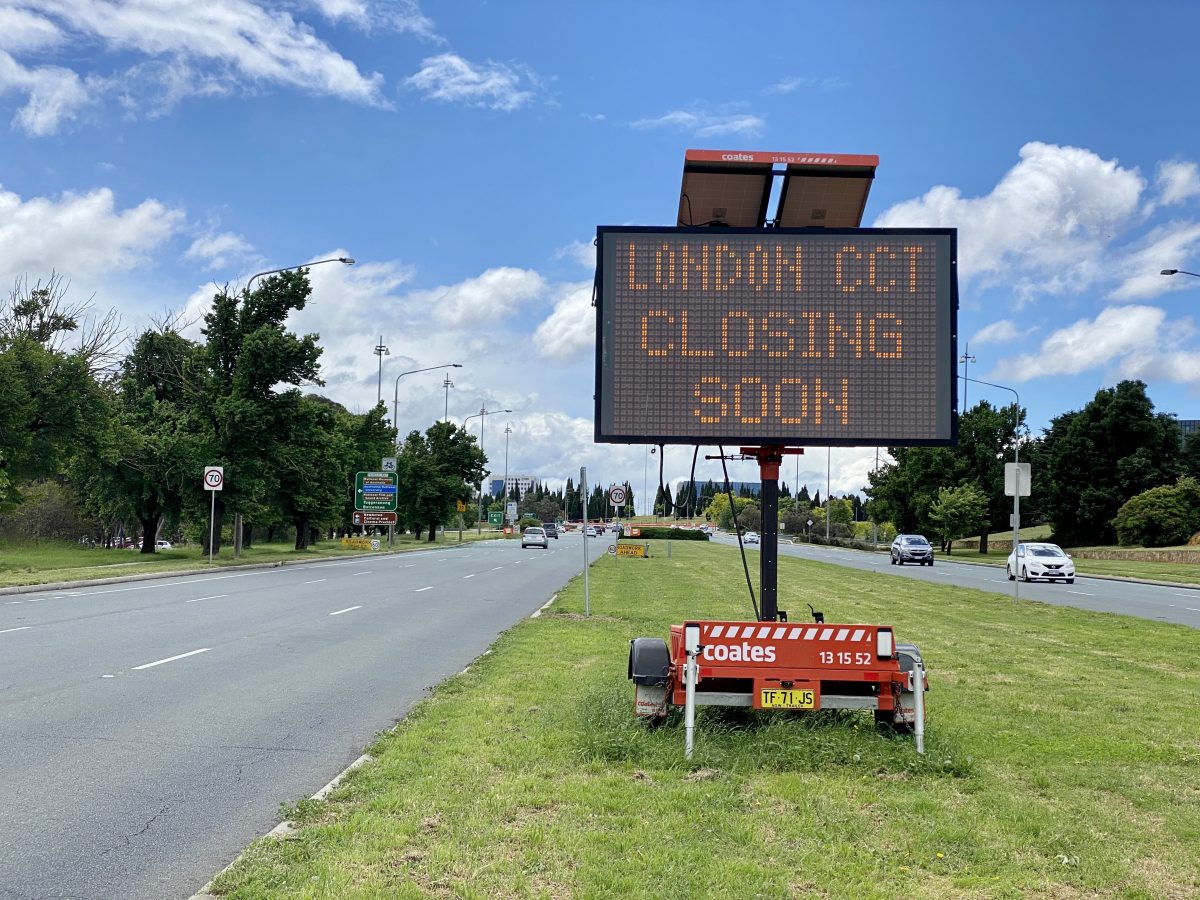
Major works to raise London Circuit have now begun – and they’ve already kickstarted some traffic chaos. Photo: James Coleman.
It’s now been two weeks since parts of London Circuit were closed to allow major roadworks to take place and motorists will likely already be adjusting their routes to avoid new bottlenecks (if possible).
The road has to be lifted by six metres to create a level intersection at Commonwealth Avenue to allow the light rail vehicle’s left-hand turn.
Both cloverleaf ramps off Commonwealth Avenue to Parkes Way and London Circuit are now shut and the southern portion of London Circuit between Edinburgh Avenue and Constitution Avenue is closed for the duration of construction.
That’s expected to take around two years.




So far, while there’s been an increase in vehicles travelling along Constitution Avenue and Vernon Circle, Edinburgh Avenue is currently underutilised as an access point to the city.
Transport Minister Chris Steel, who thanked motorists for their patience, encouraged people to use the latter route if possible.
Constitution Avenue is reportedly extremely congested in peak periods with motorists experiencing delays trying to exit car parks.
Meanwhile, although traffic conditions have improved for vehicles travelling eastbound on Parkes Way during the morning peak up to Coranderrk St, Parkes Way westbound near Edinburgh Avenue and eastbound at the Anzac Parade roundabout is congested in the morning.
As a whole, traffic volumes are also lower on Mondays and Fridays as many ACT public servants have reported flexible working-from-home arrangements on these days in particular. People are being urged to reconsider their routine and think about travelling to the office on these days when traffic volumes are lower.
Some changes to traffic arrangements have been made to assist with the disruption.
For example, traffic lights at the Parkes Way roundabout on Coranderrk Street and Vernon Circle have been installed.
It’s hoped these lights will help improve traffic flow in and around the city during construction and facilitate public transport movement.
Mr Steel said the signals were working even better than intended.
“The new signals have really proven their worth on the traffic network. At the moment, conditions for eastbound traffic on Parkes Way up to Coranderrk Street in the mornings are better during the peak than before the disruption began,” he said.
Before the London Circuit project commenced, Mr Steel announced the government would procure 30 additional CCTV cameras and 40 more Bluetooth sniffers across the road network to feed traffic information back to the team at the Traffic Management Centre.
That allows the team to convey messages to commuters about congestion on variable messaging signs, adjust signals to help with traffic flow and respond to road incidents more quickly.
Meanwhile, the Territory government is attributing its new bus timetable with reduced services next year to traffic disruptions from the raising of London Circuit and the building of the new Woden Interchange.
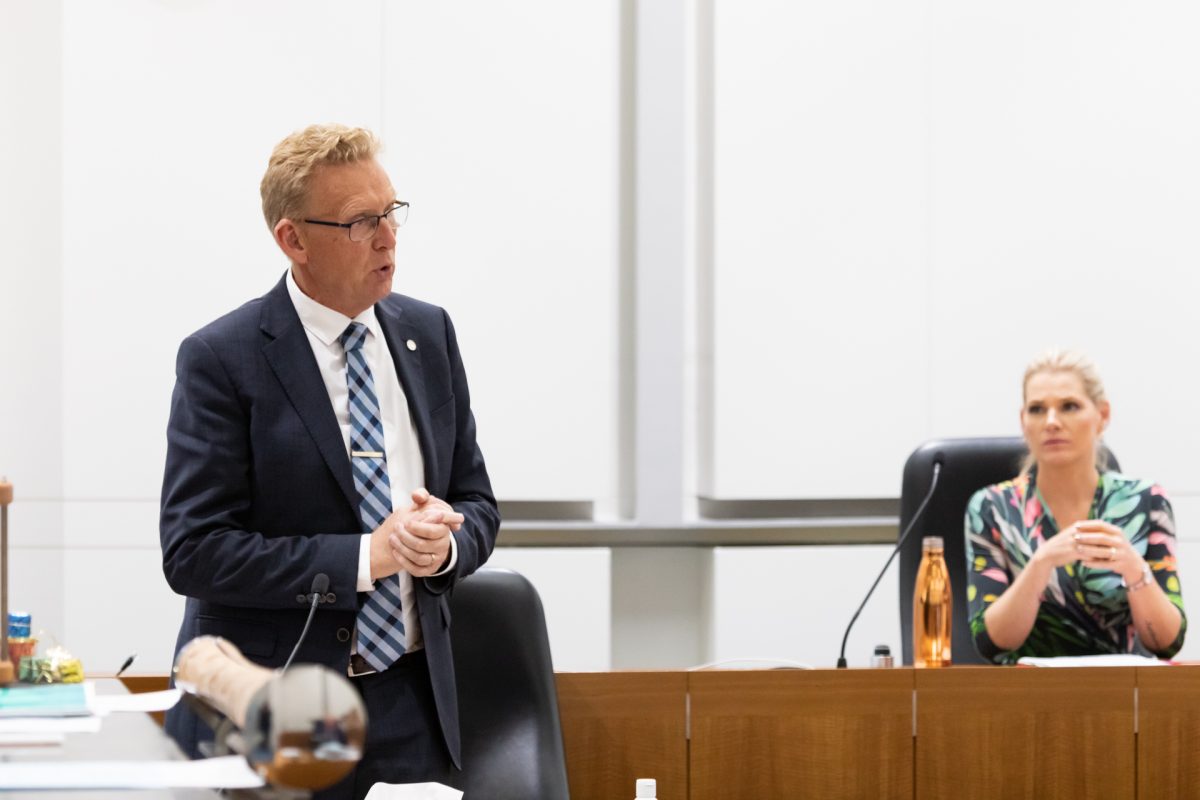
Opposition spokesperson for transport Mark Parton slammed the government’s release of the 2023 bus timetable. Photo: Michelle Kroll.
Monday’s quiet release of that new timetable – with fewer buses, no weekend improvements, fewer rapid buses after 7 pm and many routes finishing earlier – quickly drew the ire of Opposition spokesperson for transport Mark Parton.
Mr Parton accused the government of having zero interest in increasing patronage on public transport and of burying the announcement two weeks before Christmas.
Public transport advocates were also “disappointed” by the reduction in services.
Transport Canberra and City Services and Mr Steel’s office have since both put out media releases about the new timetable.
These stated further communications would be undertaken next year closer to its implementation.
Yesterday (15 December), Mr Steel said an increase in services in the second half of next year would be considered once the “actual impact” of traffic disruption on bus times had been monitored.
More congestion is expected next year when parts of Commonwealth Avenue will need to be shut.
“The new timetable responds to the disruption and focuses on reliability and delivering frequency during peak periods. The extra journey time has to be factored into the timetable and will result in a temporary reduction in the number of bus services which can be operated, particularly in off-peak times,” Mr Steel said.
“Major infrastructure projects now under construction are disruptive but they will ensure that our city is better connected, sustainable and vibrant in the long term.”












